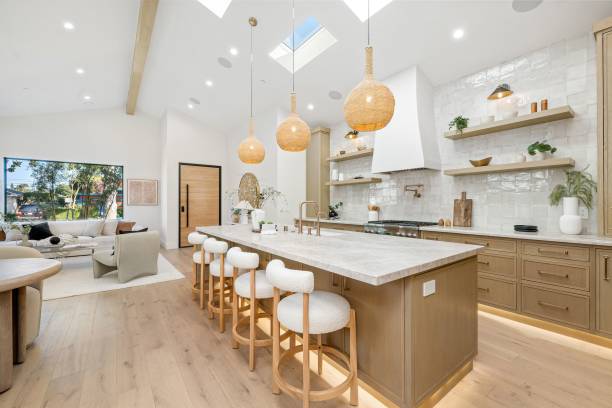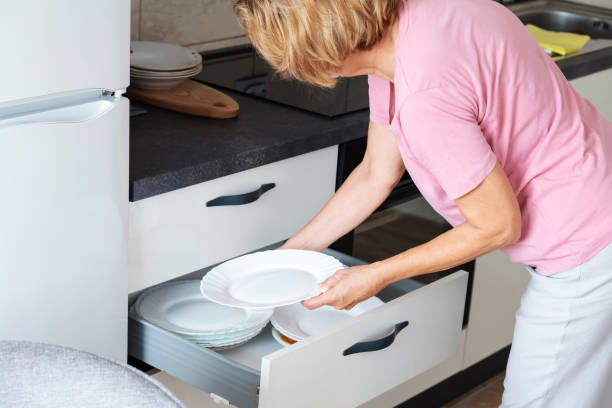The kitchen is the heart of the home, but when it’s cluttered, it can quickly become a source of stress and inefficiency. From overstuffed cabinets and overflowing drawers to expired pantry items and unused gadgets, kitchen clutter builds up over time and silently chips away at your joy of cooking and peace of mind.
In this comprehensive guide, we’ll walk you through 10 detailed steps to declutter your kitchen and transform it into a clean, calm, and functional haven for your culinary adventures.

1. Start with a Clean Slate
Begin your kitchen decluttering process by emptying everything. That means taking items out of cabinets, drawers, pantry shelves, and even the refrigerator. Lay everything out on clean surfaces so you can see what you’re working with.
Why This Matters:
A full reset gives you a complete inventory and sets the tone for intentional decision-making.
Pro Tip:
Use this moment to wipe down shelves, clean cabinet interiors, and sanitize drawers.
2. Sort and Categorize Everything
Group items into categories like baking supplies, cooking utensils, Tupperware, spices, snacks, canned goods, pots, and pans. This makes it easier to identify duplicates, unused items, or things that don’t belong in the kitchen.
Benefits:
- Uncovers hidden clutter
- Highlights excessive duplicates (hello, five can openers!)
- Helps streamline your kitchen’s function
3. Purge Ruthlessly
Now that everything is sorted, it’s time to purge. Be honest about what you use, need, and love.
What to Let Go Of:
- Expired food and condiments
- Chipped or broken dishes
- Gadgets you haven’t used in the last year
- Duplicate tools
- Mismatched containers without lids
Donation Ideas:
Gently used items in good condition can be donated to shelters, food banks, or community kitchens.
4. Reassess Your Kitchen Layout
Once you’ve purged, consider how your kitchen is set up. Reorganize based on how and where you cook.
Smart Zones:
- Cooking Zone: Keep spatulas, pots, and pans near the stove.
- Prep Zone: Store knives and cutting boards close to your prep area.
- Cleaning Zone: Place dish soap, scrubbers, and trash bags near the sink.
Optimizing the layout reduces wasted steps and increases efficiency.
5. Maximize Cabinet and Drawer Space
Use organizers, baskets, and dividers to give everything a designated home.

Must-Try Tools:
- Pull-out shelves
- Lazy Susans for spices
- Stackable shelves for dishes
- Drawer dividers for utensils
Tip:
Vertical storage is your best friend, especially for pans and baking sheets.
6. Tame the Pantry Chaos
Your pantry can be a source of mealtime inspiration or overwhelming frustration.
Pantry Decluttering Tips:
- Store similar items together (grains, snacks, canned goods)
- Label everything
- Use clear containers to spot items quickly
- Apply a “first in, first out” rule to minimize food waste
Do a weekly check to toss expired items and reorganize.
7. Simplify Countertops
Countertops are prime real estate. Only leave out items you use daily.
What to Keep Out:
- Coffee maker
- Toaster
- Knife block
What to Store:
- Stand mixer
- Food processor
- Specialty appliances
Clutter-free counters make your kitchen feel cleaner and more inviting.
8. Organize Under the Sink
This often-neglected area is usually chaotic. It deserves attention too!
Quick Fixes:
- Use a small caddy or bin for cleaning supplies
- Install tension rods for hanging spray bottles
- Store trash bags in a dispenser or box
Keep only what you need. Avoid turning this space into a junk zone.
9. Curate Your Cookbook and Paper Station
Menus, takeout menus, coupons, cookbooks, and recipes can get out of control.
Streamline:
- Digitize recipes with apps like Paprika or Evernote
- Keep only your most-used cookbooks
- Use a small bin or file folder for loose papers
This step clears mental clutter, too!
10. Maintain with a Simple Routine
Decluttering isn’t a one-time event. Build daily and weekly habits to keep it that way.
Daily:
- Wipe down the countertops
- Do the dishes
- Return items to their designated spots
Weekly:
- Clean out the fridge
- Toss expired pantry items
- Tidy one drawer or cabinet
Monthly:
- Do a quick inventory
- Reassess what’s working or not
- Make seasonal adjustments
Bonus Tips for Lasting Success
- Limit New Purchases: Don’t buy unless it’s necessary or to replace something else.
- Create a Donation Box: Keep one in the pantry or a nearby closet to collect items you no longer need.
- Labeling Works: Label containers, shelves, and bins to make finding and returning items easier.
Final Thoughts
Decluttering your kitchen doesn’t just make the space look better—it restores a sense of calm, clarity, and joy. By following these 10 practical steps, you’ll create a more efficient, functional, and beautiful space that supports healthy habits and daily enjoyment.
Start small, stay consistent, and watch your kitchen transform into the welcoming, stress-free hub it was always meant to be.
